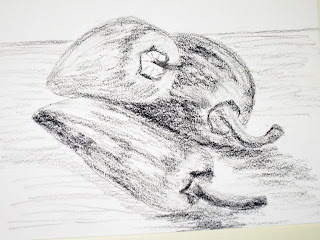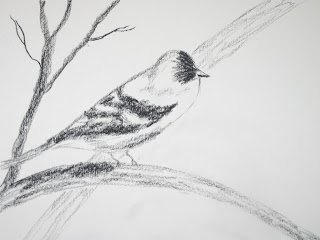
Sunsets were one of my favorite subjects when my main artistic pursuit was photography. When I took up painting five years ago, the first painting was that of a sunset. So I keep returning to sunsets from time to time and each time provides a new learning of some sort.
I started Sunset Encore with a very thin coat of acrylic colors applied on the canvas with a very wet sponge. The effect was almost of watercolor on paper and I could have stopped right there. The rest of the painting was then built up in layers of thin paint. Other than the coastline, there is no attempt to create any objective representation in this painting. The coastline anchors the sky and sea so that not much else is required to give a sense of depth.
Sunset Encore, Acrylic on canvas, 36"x24", Not for sale








